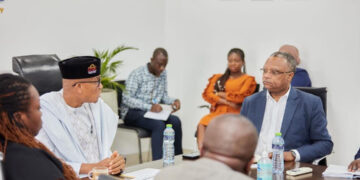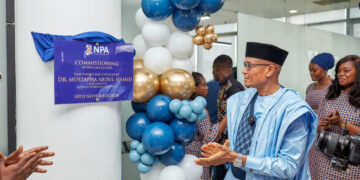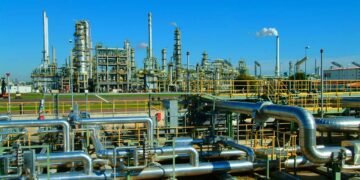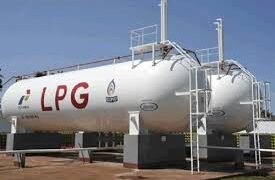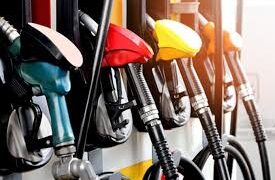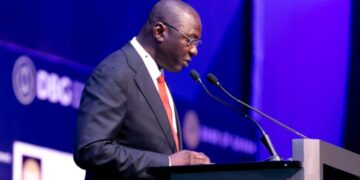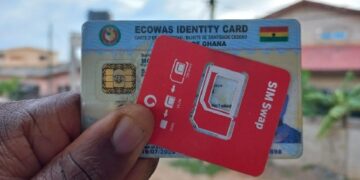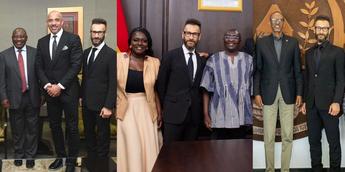Abu Dhabi (CNN Business)Saudi Arabia is taking drastic steps to shore up its finances after the oil price crash and the coronavirus pandemic upended the economy and threatened Crown Prince Mohammed bin Salman’s grand plan to reduce its dependence on crude exports.
The world’s biggest oil exporter this week announced a raft of measures designed to raise funds, including a sharp reduction in cash handouts to Saudi citizens and a tripling of the sales tax rate to 15%, starting in July.
Saudi Arabia scrambles to boost oil prices and revive the market it helped crash
Saudi Arabia scrambles to boost oil prices and revive the market it helped crash
The austerity measures will help plug a yawning hole in the government’s budget, adding up to nearly 8% of Saudi Arabia’s annual economic output when combined with spending cuts announced earlier this year, according to credit ratings agency Moody’s. The tax hike is equivalent to 5% of GDP.
At the same time, the Saudi government announced that it would deepen its oil production cuts by 1 million barrels per day in June, the latest in a series of attempts to boost prices after an abortive battle for market share with Russia and the United States and a sharp reduction in demand caused by the pandemic sent crude into a record tailspin.
Saudi Aramco, the state oil company, said Tuesday that its net profit fell 25% in the first quarter. The price of Brent crude plunged by roughly two thirds during the first three months of the year, dropping below $23 per barrel at the end of March. US oil prices turned negative in April but have recovered since.
Before the moves this week to raise revenue, Saudi Arabia needed oil prices to more than double to balance its vast budget, which includes heavy social and military spending. The shortfall could also force the crown prince to rethink his Vision 2030 plan to diversify the economy through initiatives including several massive tourism projects and a futuristic city.
Saudi Arabia’s war chest, which was built using the proceeds from crude oil sales, has been emptying at an alarming rate.
“The timing [of the oil crash] is absolutely awful because diversification attempts have not borne any fruit yet, it has not even started in earnest and it becomes much more difficult to do now than it would have been with a full war chest,” said Christof Rühl, a senior research scholar at Columbia University’s Center of Global Energy Policy.
Saudi Arabia’s Crown Prince Mohammed bin Salman is pictured during a meeting with the US secretary of state.
Saudi Arabia’s Crown Prince Mohammed bin Salman is pictured during a meeting with the US secretary of state.
It will now be more difficult for the government to spend big on capital intensive projects including NEOM, a $500 billion futuristic city on the Red Sea, during an austerity drive. Such projects, said Rühl, “should not be sacrosanct.”
The government’s official foreign reserves dropped by $26 billion in March, the steepest monthly fall on record. Reserves now stand at $465 billion, down from the recent peak of $750 billion in 2014. The decline earlier this year led the central bank to put out a statement affirming that it would keep the Saudi riyal pegged to the US dollar.
The economic backdrop remains grim: The International Monetary Fund expects Saudi Arabia’s economy to contract by 2.3% this year. Global oil demand dropped by nearly 30% last month, and an annual decline of 10% is expected this year, according to the International Energy Agency. And global demand may never recover fully from the pandemic, analysts have warned.
Why oil and gas prices are rising: Cabin fever and easing social distancing
Why oil and gas prices are rising: Cabin fever and easing social distancing
Saudi Arabia’s finance minister, Mohammed al-Jadaan, said recently that everything needs to be on the table when it comes to budget cuts, with the exception of the basic needs of Saudi citizens who for decades have enjoyed generous subsidies for food, electricity and petrol.
“There will be discontent over the higher [tax], but I don’t think this will boil over. There are of course fewer resources for state-driven diversification projects, but some of these were speculative in any case,” said Steffen Hertog, a Gulf specialist at the London School of Economics.
That view may not be shared by bin Salman, who wields enormous power as crown prince and is known by the initials MBS.
Bin Salman rolled out his economic blueprint in April 2016. He created the Public Investment Fund, a sovereign investment vehicle empowered with seed capital of $400 billion, to help push forward diversification. It was funded in part by an IPO of Saudi Aramco that raised $25.6 billion.
Now Aramco is reportedly balking at the $69 billion price tag it agreed to pay to the Public Investment Fund as part of the Vision 2030 plan for a majority stake in SABIC, the Saudi chemical giant. Aramco told CNN Business on Tuesday that the deal is on track to close in the second quarter.
The other serious challenge, analysts say, is that the burden of the economic diversification effort is being carried by the government itself with little in the way of foreign direct investment, which spiraled lower after the government clawed back $107 billion from 381 wealthy Saudis, many of whom were arrested and held at the luxury Ritz-Carlton hotel in Riyadh starting in 2017. Foreign direct investment remains at only a quarter of its level a decade ago.
Looking ahead, there are questions over whether oil output cuts undertaken by Saudi Arabia and allied producers can counter the sharp drop in demand caused by the pandemic. If not, crude prices will remain low and the country’s budget pain will continue.
“The reality is that prices will stay way below what they had planned for their budget for a very long time,” said Rühl of Columbia University.


